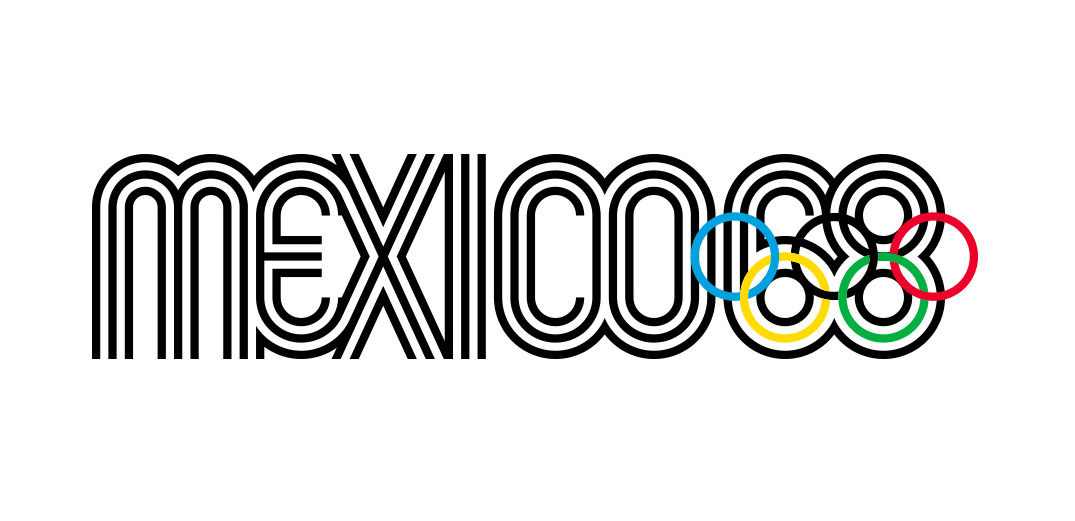AnalogFolk on being digital in a non-digital world
Bill Brock, Matt Dyke and Simon Richings from the London-based agency chat to .net magazine about man skills, augmented reality and the importance of remembering the world’s not digital.
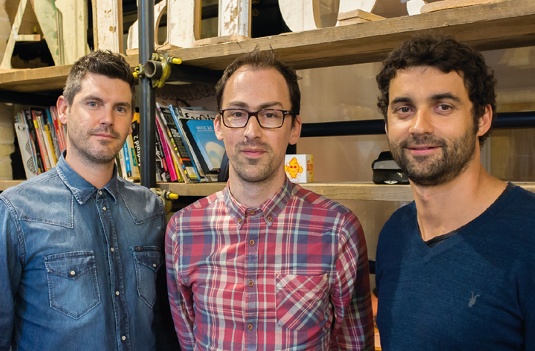
Q: Can you tell us a bit about yourselves?
BB: Matt Dyke and I launched AnalogFolk in 2008. Our ambition for the company is to build and nurture an inspiring environment for talented folk to come together and make interactive experiences that deliver value for people and brands. Our work includes (but is not limited to) brand and communications strategy, website development, mobile applications, events, retail installations, eCRM, social media and branded content such as film, image, audio and editorial.
Five years on and AnalogFolk has grown to employ more than 100, with offices in London, Sydney and New York. It’s been a fantastic journey so far, with ups outweighing downs, and we’re excited for what the next five years will bring.
Q: Where did your name come from?
BB: Many people think that since we’re experts in digital technology, the name must be steeped in irony. Having grown up in the US, I am humbled anytime a Brit acknowledges my potential to be ironic. But in this situation the credit would be misplaced.
The name is recognition of the fact that people live their lives in analog and that our most memorable experiences are physical in nature. This serves as the inspiration for our company mission to use digital technology to make the analog world better.
Q: Any notable clients?
BB: We are incredibly fortunate to work with some of the world’s biggest and most innovative brands. Included amongst them are The Absolut Company, AkzoNobel, Ernst & Young, Heineken, HSBC, Nivea and the Volkswagen Group.
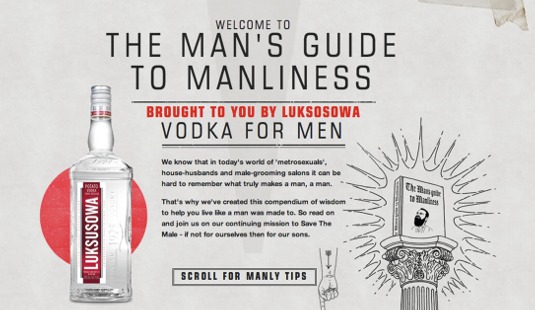
Q: The Man’s Guide to Manliness - what’s that campaign all about?
SR: In today’s world of househusbands, male grooming salons and David Beckham underwear, it can be hard to remember what truly makes a man, a man. That’s where Luksusowa comes in, with its potato vodka. We developed the brand positioning ‘made by men, for men’. But rather than give mankind just another brand site, we wanted to create an online destination that gave genuine value to our target audience through entertaining, shareable content.
To do this we created the Man’s Guide to Manliness: a one-page scrolling site, delivering a tongue in cheek ‘how to’ guide on manly pursuits, behaviour and all those essential skills no real man should be without, everything from ‘How to choose a dog’ to ‘How to win at sports’. We even integrated the core brand messages into the guide by delivering them in the same format, with such tips as ‘How to grow old’ leading you into the history of the brand, thus ensuring a seamless experience.
Knowing that our target audience of 21-to-35- year-old men genuinely care about how they are perceived online, we made each and every ‘tips’ independently shareable; giving them compelling, funny, manly content to share through social media and boost their online reputation. To top it all off we commissioned renowned illustrator Mr Bingo to illustrate the ‘tips’ using his distinctive style, complementing the brand’s tone of voice and at the same time making content even more likely to be shared.
Q: Is there a secret to grabbing attention with a digital campaign?
MD: As with any media platform, attracting attention with an online campaign is about understanding your audience and then creating something distinctive and literally ‘remarkable’. What’s exciting about working with digital media is that your hook doesn’t just have to be the content itself, it can also be a use of technology that creates that unique experience people talk about and share.
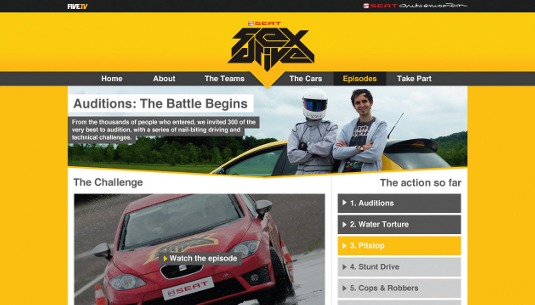
One of the pervasive myths of successful digital campaigns is the lack of importance of paid media in driving interaction. No matter how compelling your campaign, paid media is critical for generating that early awareness and building momentum.
Q: How does your augmented reality work for SEAT typify your approach?
SR: All our folk are passionate about finding new and innovative ways to help our clients improve their businesses. The SEAT augmented reality dealer iPad app is a fantastic example of this passion.
These are challenging times for the automotive industry. Especially in Europe, the financial crisis is putting a tremendous pressure on brands to grow market share whilst sustaining profitability.
As a key partner to SEAT, we are constantly looking for ways to optimise the customer journey from awareness through to ownership. The augmented reality dealer iPad app is a project we are extremely proud of: it is a perfect illustration of how we can use innovative technology to improve a customer’s experience of a product, ultimately improving conversion to test drive and purchase.
Q: What advice would you give a smaller agency looking to make it big?
MD: This is a hard question – we still very much think of ourselves as a small startup. I suppose, as I look back at the last five years, I would say the most important contributor to our success has been the clarity and consistency of our vision and values.
They’ve been the rallying cry for our folk, the key messages for new business and the basis for our work.
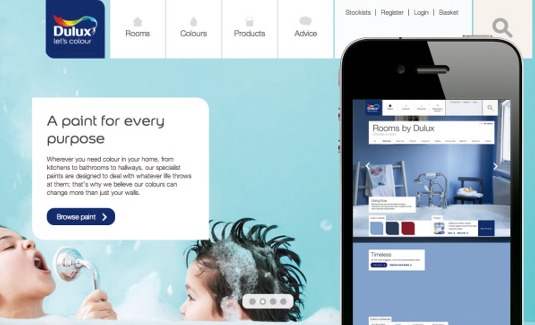
Q: Is there a secret to working smoothly with super demanding clients?
BB: With recessionary economies upon or around us, we are operating in demanding times. To sit back is not an option. We all need to demand more from ourselves. Crucially, we need to think more creatively about how we succeed through innovation.
When you are trying to break new ground and create innovation, trust, communication and collaboration between agency and client are paramount. You must set clear expectations and manage the natural risks associated with working with new technologies.
So I guess the secret is to have no secrets. Communication is critical to innovation.
Q: How closely do you work with your clients? Are you remote consultants or do you become effectively embedded with their teams?
BB: The starting point for all our client relationships is to define their long-term strategy as it relates to innovation and digital technologies. We find that this creates a ‘closeness’ that supersedes any physical proximity in terms of working methods.
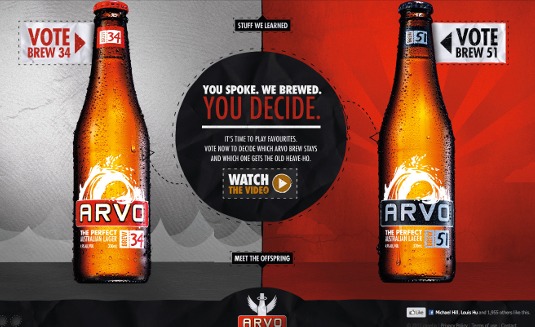
Once we have helped to define this strategy, we work with them to deliver the strategy through deploying innovative experiences across a variety of platforms (web, mobile, events, retail and so on).
Some of these experiences are short-term in nature, but many are long-term brand platforms. It is in the deployment, management and evolution of these long-term platforms where we find it is most effective to co-locate teams with our clients.
.net: Which web technologies excite you?
BB: With such a large creative technology team, we’re always finding time to play with emerging mobile and physical technologies. But we don’t just use new technology for the sake of it. We’re big advocates of using the right technology for the job. So, we like to spend time prototyping builds to ensure we are delivering the best possible experience with the technologies available.
We are particularly keen on using Sass, Backbone.js, Require. js, and the social APIs from Facebook, Twitter, and Storify. We’ve also been building interactive infographic tools using HighCharts, a HTML5 SVG JavaScript library.
Q: What about prototyping and communicating ideas to a client> Do you use Photoshop or do you prototype in the browser?
BB: Because our ideas span across a wide variety of platforms and technologies, we keep an open mind to the tools we use for communicating them to our clients. We also find the best medium for sharing ideas varies from client to client depending on their capacity to envision the end product.
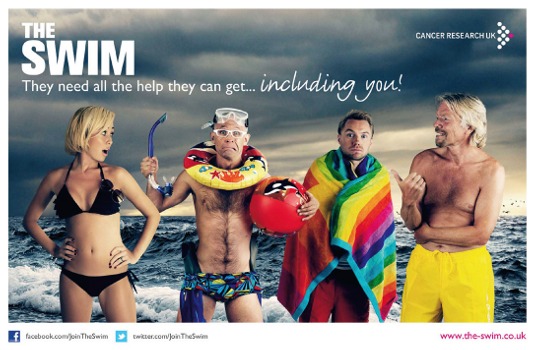
All that said, prototyping is a great tool for greasing the wheels of a project. Whether it is a paper prototype, functional prototype or even just an animatic for a film project, it can be a valuable tool in helping clients to visualise the ambition of the project.
Q: Agencies, designers, developers: who is impressing you at the moment?
MD: IDEO for the way the team think laterally; BERG for its dedication to making stuff.
SR: Forsman & Bodenfors for its slick work with a human soul (check out their Faktum Hotels work). Stinkdigital for its superlative production.
Q: What advice would you give an ambitious young designer or developer looking to join you?
SR: Beyond talent, a designer or developer looking to join the team needs an informed point of view on the digital world, an open mind and a love of their craft. Having a strong opinion is a must, but it has to be one backed up with knowledge. I don’t want to hear that you don’t like the new iOS icons. Tell me how they should have been designed, and why.
The flip of this is the open mind – we are all learning, every day. These two qualities help ensure that creative decisions always have some solid thinking behind them. As for loving your craft, you need to be excited about the doing as much as the beautiful output.
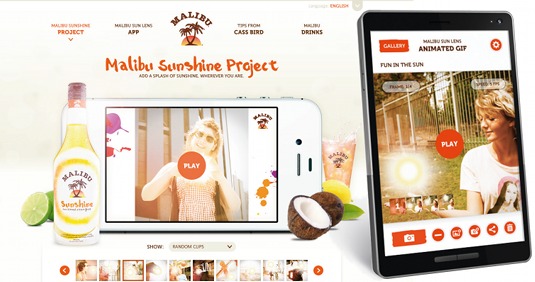
Q: What’s the biggest lesson you’ve learned along the way?
MD: Always hire people who are better than you.
Q: What should every creative have for lunch to fuel an afternoon of ninja-grade brilliance?
SR: A tasty and nutritious snack of not-thinking-about-your-project-for-half-an-hour. Breathe some air. Take in some culture. Think about somebody else’s project. Read that thing you Instapapered. Essentially, do something else – because this afternoon (possibly now assisted by additional insights, inspiration and perspective) you will nail it. Also, a sandwich is good.
Words: Martin Cooper
This article originally appeared in .net magazine issue 244
Liked this? Read these!
- Check out these top examples of JavaScript
- Great examples of parallax scrolling websites
- Brilliant pieces of landing page design
Which would be your dream agency to work at? Comments, yo!

Thank you for reading 5 articles this month* Join now for unlimited access
Enjoy your first month for just £1 / $1 / €1
*Read 5 free articles per month without a subscription

Join now for unlimited access
Try first month for just £1 / $1 / €1
Get the Creative Bloq Newsletter
Daily design news, reviews, how-tos and more, as picked by the editors.

The Creative Bloq team is made up of a group of art and design enthusiasts, and has changed and evolved since Creative Bloq began back in 2012. The current website team consists of eight full-time members of staff: Editor Georgia Coggan, Deputy Editor Rosie Hilder, Ecommerce Editor Beren Neale, Senior News Editor Daniel Piper, Editor, Digital Art and 3D Ian Dean, Tech Reviews Editor Erlingur Einarsson, Ecommerce Writer Beth Nicholls and Staff Writer Natalie Fear, as well as a roster of freelancers from around the world. The ImagineFX magazine team also pitch in, ensuring that content from leading digital art publication ImagineFX is represented on Creative Bloq.
